Finding a sea slug is always a moment of joy. I can’t imagine ever losing the excitement of spotting a minuscule blob that might just be something and realising that it is moving, unfurling, becoming spectacular. There are so many species, that I have plenty yet to discover as well as many old acquaintances to renew.
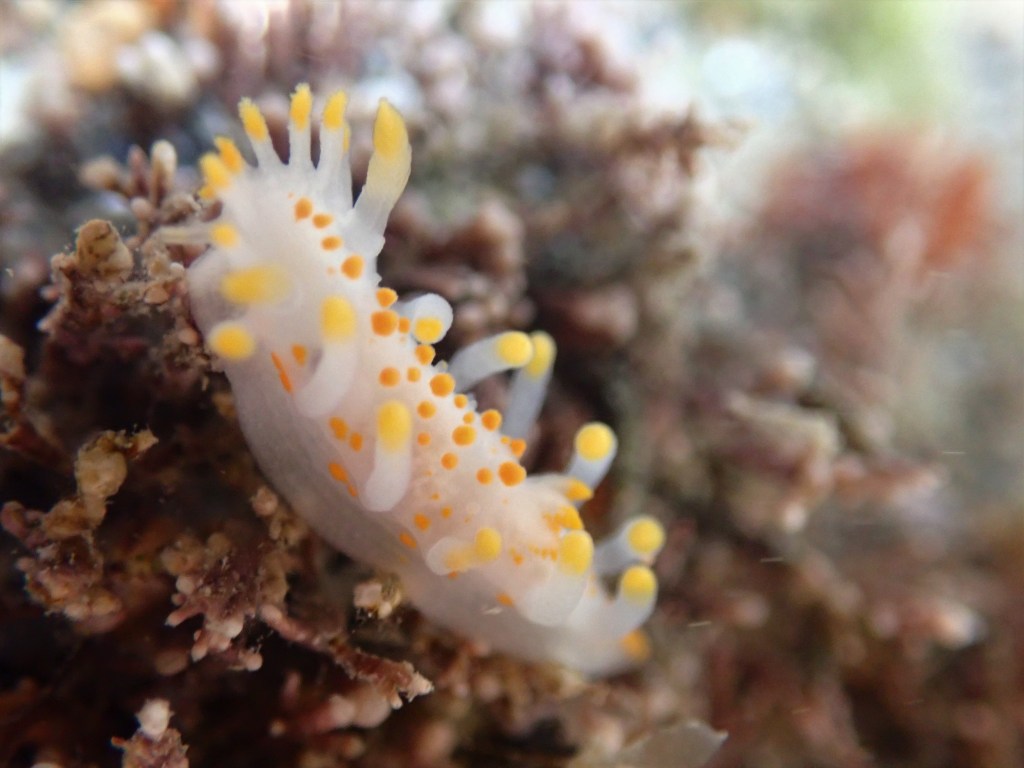
The oystercatchers are unusually quiet, huddling between the rocks in the distance and I’m glad of my waders to keep the worst of the north wind off. Conditions could be better, but with two households of keen rock poolers on the beach today, all trussed up in enough layers for an Arctic expedition, we feel sure that good things will happen. Junior and his friends let us adults get a head start while they chat after a long time apart, but they’ll soon join us when we uncover something interesting. Sure enough, just minutes into our explorations, the shout of ‘slug’ goes up.
Other Half, who was just saying that he always looks for sea slugs but never finds them has found one. He beams and points it out; I have to follow his finger to see it among the pink coralline seaweed.
Not only has he found a slug, it is an absolute beauty.
At first I think this is a species that I haven’t seen before. The slug’s body and the rhinophores protruding from its head are an intense orange. The dense hair-like cerata on its back are mostly patterned in speckled grey and orange, except for a bright white row of cerata immediately behind the slug’s head, forming a pretty white ruff around its ‘neck’.
It is this white collar which makes me realise that the slug is likely to be a species which is usually far less colourful, Aeolidiella alderi. This slender slug feeds on anemones, and is particularly fond of daisy anemones. Like some other Aeolid slugs, A. alderi takes in the colour from its food, so it looks like this little slug has been feasting on something orange.
I have barely started to look at the A. alderi slug under my camera when our friends shout, ‘Slug!’ I hurry across the rocks as fast as my waders will take me, looking and feeling rather like a lumbering green Teletubby and not caring one bit. The day has started as we hope it will go on.
We position ourselves around the minute blob and angle the rock it is on so it is a little deeper in the pool. Like most slugs, it looks like a tiny streak of jelly when it is out of the water, but once submerged its back fluffs into long star-studded cerata and enormously long moustache-like tentacles curve out from its head.
The ringed rhinophores on this slug’s head look like a pair of mini helter-skelters, waving at my camera as the slug advances towards me. A pair of black eyes stares up into my lens.
The slug is so small that I’m not entirely sure of the species until I see the photos on a bigger screen back at home. The little star-spots all over its body are a giveaway. This is Facelina annulicornis, which I call the ‘starry unicorn slug’ to help me remember the scientific name.
Back on the beach, I take our friends to see Other Half’s little orange slug and we explore the pool further. To my amazement, the very next stone I check has an intense spot of purple on it, like a gleaming amethyst. This can only be another slug.
I place the rock gently under the water and the slug fluffs up in an instant, forming a ball of intensely coloured cerata. The colour is so bright that I expect it to be an Edmundsella pedata, but as it stretches out its body I can see that the cerata are vivid blue, red and white, a Facelina auriculata.
This is the most incredibly coloured one I have ever seen and my camera cannot fully capture how bright it is. The slug is so captivating that I only realise there is a second, less colourful, slug on the rock when it photobombs its companion. This is likely to be a mating pair, although there is no sign of spawn as yet.

By now, the children have joined us, keen to see what all the excitement is about. Junior recognizes the ‘patriotic sea slug’, as we call the Facelina auriculata (in honour of the many countries that have red, white and blue flags), but the colours make him gasp with amazement. He sets to with his camera, trying to capture every angle.
As the tide rolls further out, the pools seem to stretch forever in every direction and I’m torn as to where to go next. Every pool is full of possibility and I cannot visit them all before the sea returns.
I decide to make the most of my waders, slooshing out to the edge of the sea, through shallows packed with rainbow wrack adorned with the mermaid’s purse egg cases of greater spotted catsharks (Scyliorhinus stellaris).
There are flatworms galore, their clusters of eyespots seeing the world in ways I struggle to imagine. A variegated scallop spots me through the many eyes dotted around its part-open shells and decides to move to safety, slamming its shell shut to propel itself.
Urchins extend their tube feet in their strange dance, curving and twisting between their purple-tipped spines.
One of our friends finds a fully-grown spider crab, sheltering beside a rock, wonderfully camouflaged against the shell sand. We leave it undisturbed and well covered in seaweed to keep it safe from the marauding gulls.
Our other friend signals to me from beyond the rock line. She is performing our special arm-waving dance, as invented by Junior. She must have found a Discodoris slug (Geitodoris planata).

These unpretentious brown pancake-flat slugs don’t have any of the bling of the other nudibranch slugs we’ve seen today but looks aren’t everything. The Geitodoris planata’s secret weapon are acid glands, forming white stars on the slug’s sides. This is a formidable and fascinating slug.
Incredibly, our slug finds keep on coming. Close by is a Berthella plumula, which we call the ‘feathered Bertha’. This striking yellow slug can also produce acid if it is disturbed and, weirdly for a slug, has an internal shell, visible as a dark patch in the middle of its back.
Another yellow spot on the rock turns into this fabulous Limacia clavigera slug as soon as I put it in water. I take a few photos before carefully returning it to its hideaway.
The tide is coming in and the raw wind has taken its toll on my hands. I stuff my frozen fingers down the neck of my jumper, but they are still painful and numb from plunging repeatedly into the water. A sensible person would give up before frostbite sets in, but I’m not that sort of person… there might still be slugs to find. The kids are not so daft: they have wandered back to the top of the beach to start on the picnic lunch.

As the tide moves up behind us we explore the mid shore, hoping to find goby eggs or clingfish eggs and the slugs that eat them. It’s still a bit early in the season, but we find a few patches of yellow clingfish eggs.
Eventually, hauling up a rock that feels as big as myself, I spot some capsule-shaped eggs on the underside. These are larger than the rock goby eggs I’ve seen this week, so they could belong to a giant goby. Some of the eggs are empty and others are well-developed, the baby fish looking out at us with silvery eyes. Taking great care not to disturb them, we scan the rock.
Seeing no sign of slugs, I use my camera to look more closely. At first I find nothing, but spotting something tiny and dark I zoom in. My hands are struggling to press buttons, but I convince myself this is something. It seems to move a little.
All of a sudden I have it in focus, although it is half-hidden between the eggs. This is a slug quite unlike the others we have seen today. Its body is compact, lumpy and camouflage green. On its head two wonderfully tall rhinophores stick up, poking above the eggs like periscopes. If the army designed slugs, they would probably look a bit like this.
I’m so thrilled I almost keel over backwards as I try to balance my camera and keep the stone steady. This is a Palio nothus; the very first slug of this species I’ve ever found. It is probably feeding on tiny animals called bryozoans on the rock rather than the eggs. It’s barely 5mm long, probably less, and almost impossible to photograph properly with my seized up fingers, but I couldn’t be happier.
This beach is amazing and the slugs are just what I hoped to see, but the best thing of all is to finally share the experience again with amazing friends and my wonderful family. It will take me all day and night to thaw out but I couldn’t care less. This is my happy place.
Rock pooling is a wonderful way to see the wildlife if it is done carefully. If you are heading to the shore, remember to leave the stones, seaweed and animals exactly as you found them. Take nothing with you and leave nothing behind. There are lots of rockpooling tips on this site to help you rockpool safely and sustainably and identify your finds.


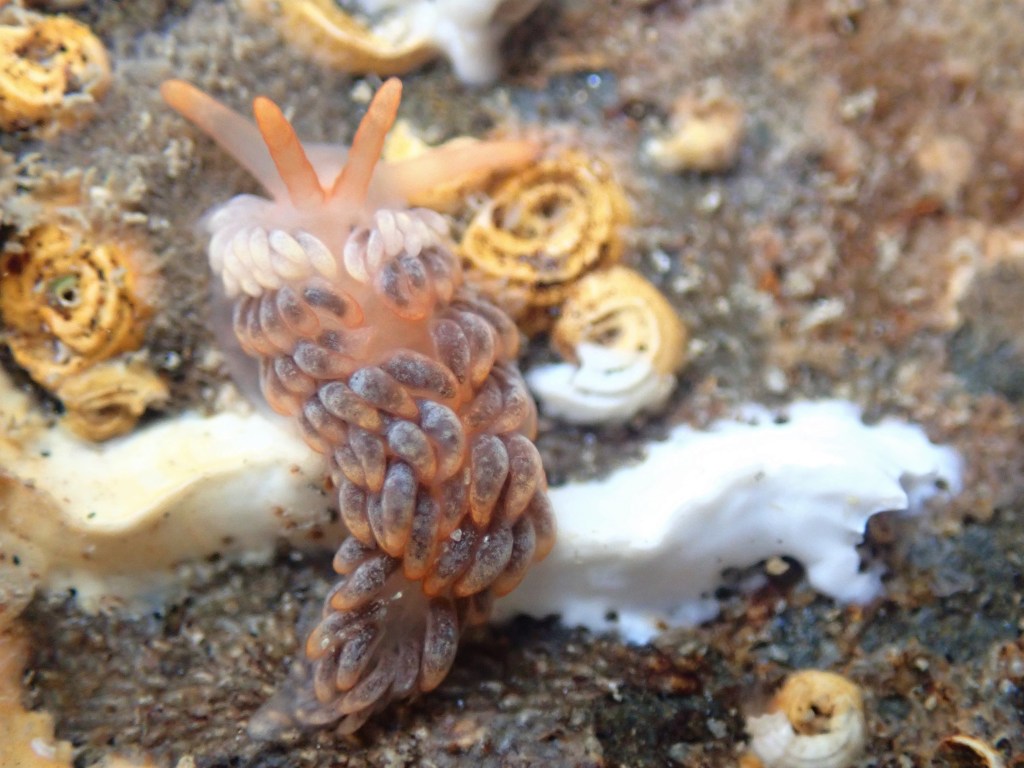

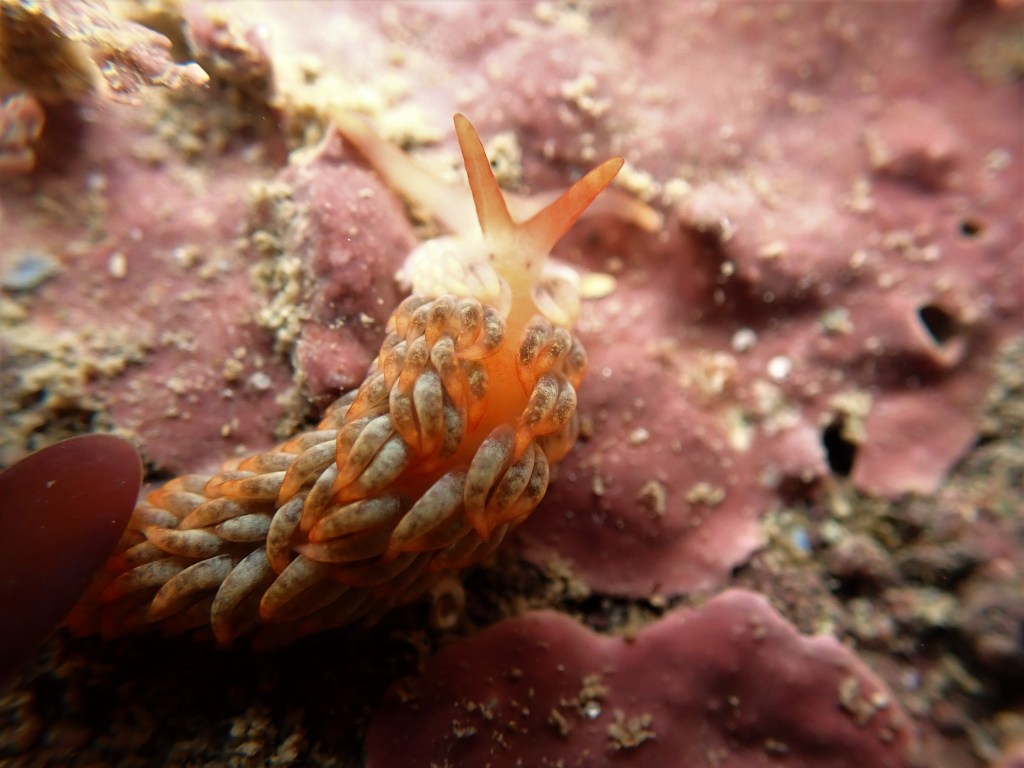


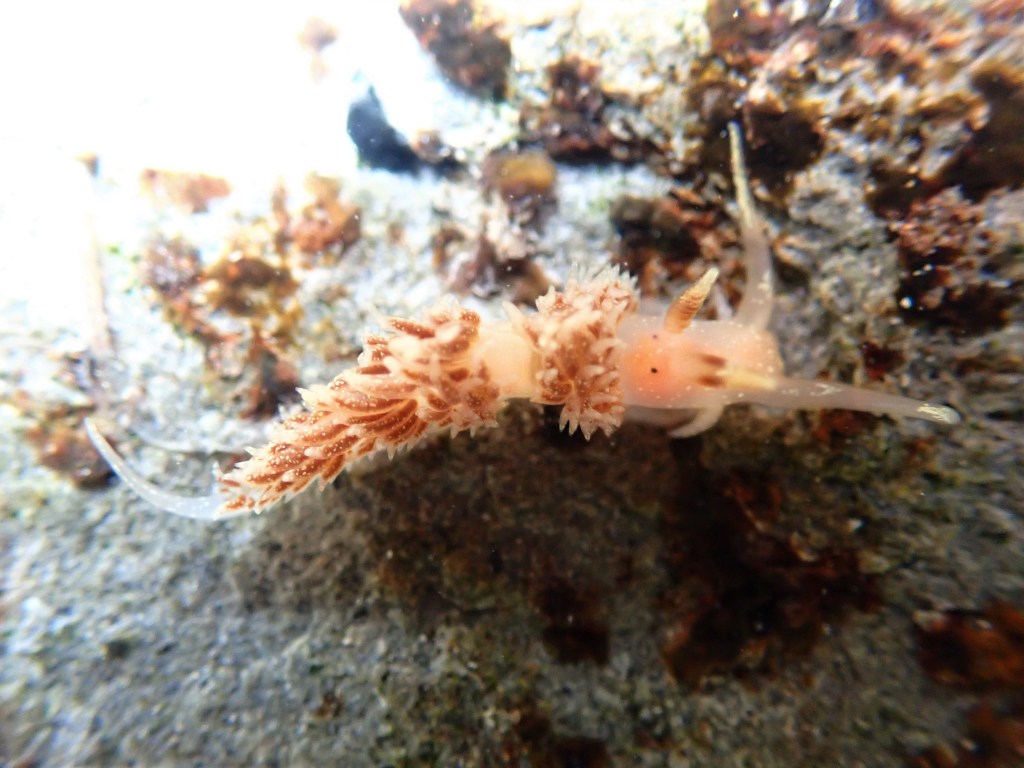
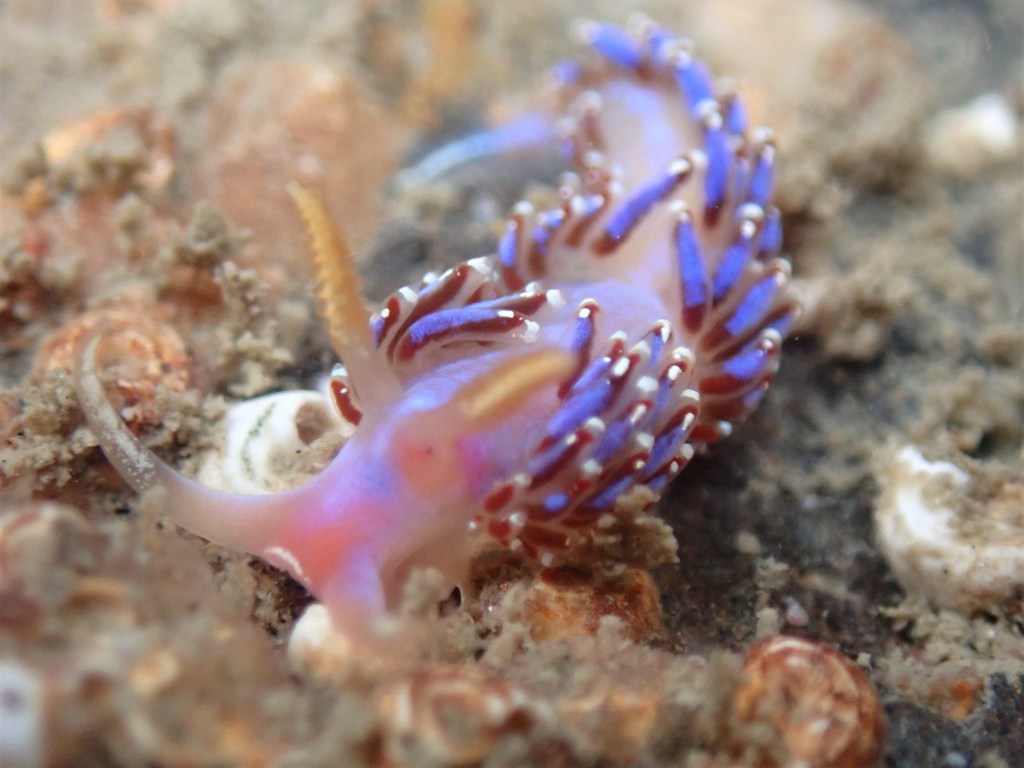



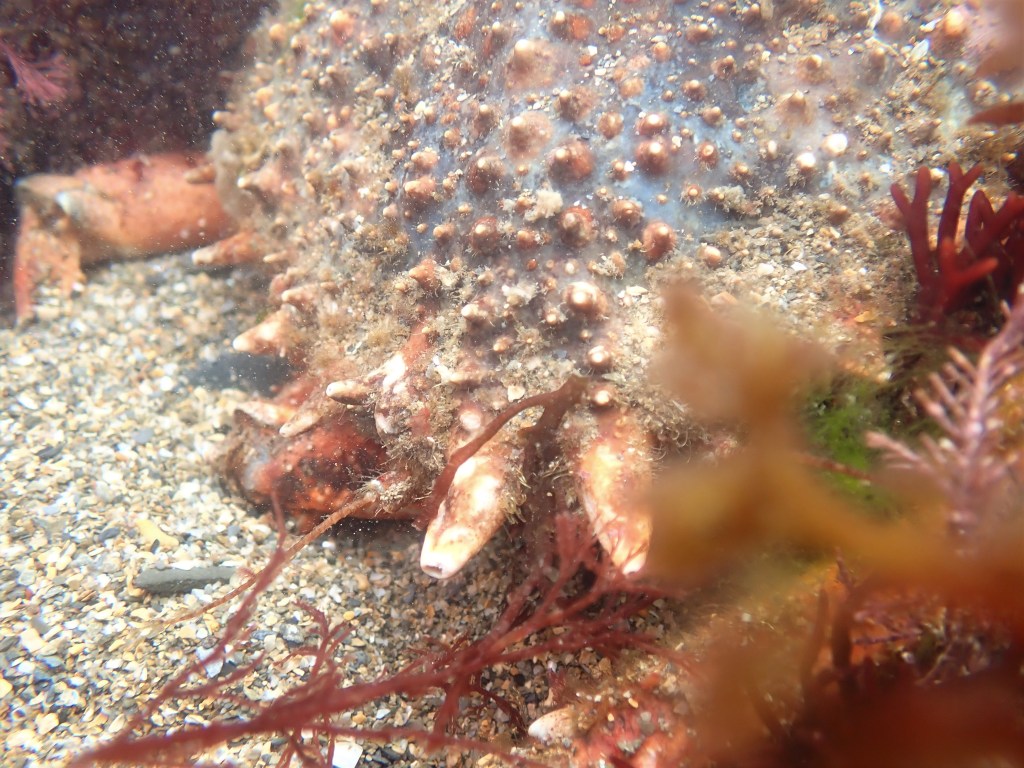
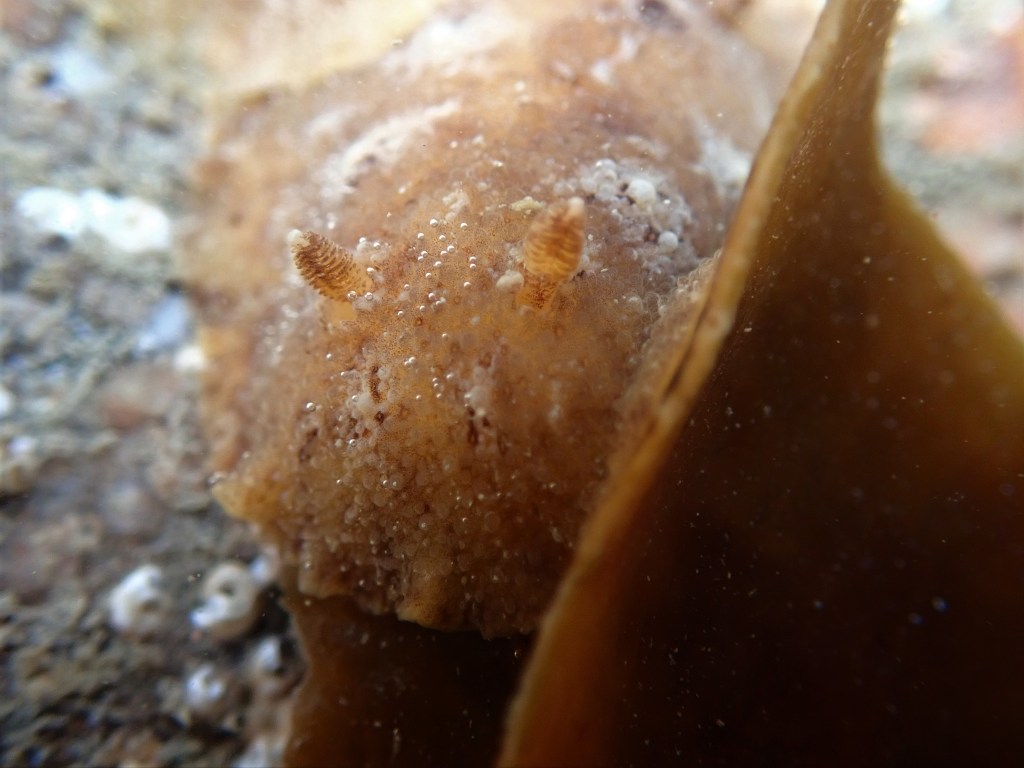





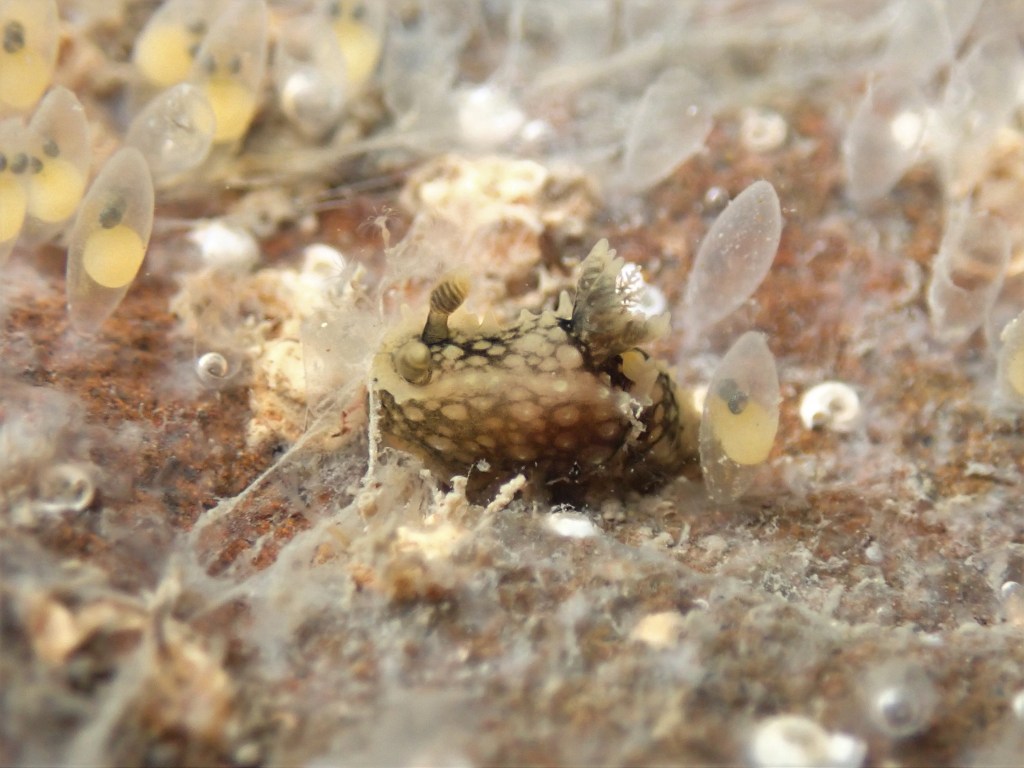
Fantastic!
LikeLiked by 1 person
Thanks Lisa. We must get out for a rockpooling walk together soon. I hope all your projects are going well. 🙂
LikeLike
WOW what a lovely array of sea slugs Heather. X
LikeLiked by 1 person
They were gorgeous! We found even more a couple of days later… I’ll get that written up soon. I’m enjoying all of your amazing post too… looking forward to getting up to Anglesey to see you both some day! 🙂
LikeLike
Thanks, Heather. Only you could make slugs so captivating?
LikeLiked by 1 person
Thanks Rob. Slugs are the best! 😀
LikeLike